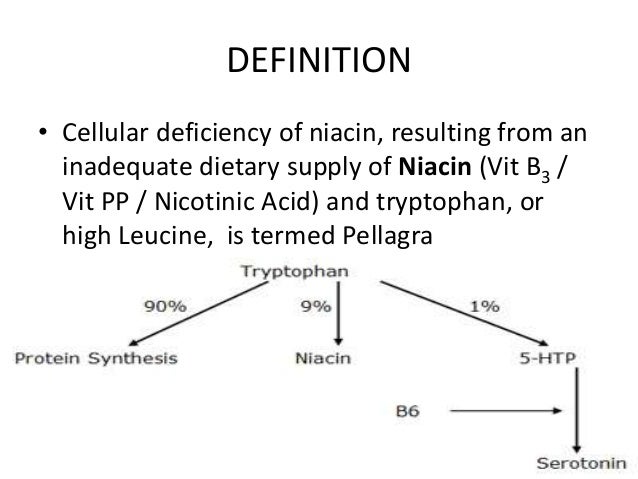BENEFITS AND RISKS OF B-GROUP VITAMINS AS PERFORMANCE ENHANCERS

In modern times, the use (and the abuse) of so called "energy drinks" is increasing at an alarming rate. Athlets (both professionals and amateurs) and students, because of the constant claims of enhanced performance in advertising, consume supplements via a lot of beverages (such as Red Bull, Burn, Monster...), powders or pills. Beyond caffeine, a "cultural" stimulant present in our daily routine, which role has been extensively studied, the most common supplements are taurine, inositol and B-group vitamins, often present in a percentage over 100%
RDA in one serving.
In this essay we will discuss the
physiological role of B-group vitamins' supplements, their
medical use, their possible
enhancing effect on both physical and mental performance, and the possible
risk derived from their abuse.
1. PHYSIOLOGY OF B3, B6 AND B12

B3, also known as Niacin or Nicotinic Acid, is an essential human nutrient as it is the main precursor of NAD and NADP, which are involved as coenzymes for many dehydrogenases.
NAD is important in catabolism of fat, carbohydrate, protein, and alcohol, but also in cell signaling and DNA repair; NADP in anabolism reactions (fatty acid and cholesterol synthesis). Niacine can also be syntetized ex novo from L-Tryptophane in an expensive pathway that also reduces avaiable L-Tryptophane for the syntesis of neurotrasmitters such as Serotonin. This is the reason why a daily intake of Niacin is essential.
The mean dietary need of Niacin is about 15mg/day in adults, but varies with age, sex, pregnancy and breastfeeding. It is usually present in all grains except for maize.
PHARMACOKINETICS: its absorption is from GI tract (Tmax 30-60min); it follows a first pass metabolism in liver; it is eliminated in urines (70% unchanged). Half life: 30min.

A temporary deficiency in B3 can slow down the metabolism and cause nausea, skin and mouth lesions, anemia, headaches, and tiredness. A chronic deficiency leads to a condition called pellagra, characterized by dermatitis, dementia and diarrhea which can be fatal.

B6 refers to a group of chemically similar compounds (such as Piridossin, piridoxal etc...), and it has several roles as cofactor:
-with enzymes as cystathionine synthase and cystathionase, to transform methionine into cysteine
-in the breakdown of AA by transaminases
-in synthesis of serine, neurotransmitters, ceramide
-in selenium metabolism
-in glycogenolysis
-in gene modulation
It is present in grain, meat, vegetables and nuts. Its daily requirement is about 1,3 mg.
PHARMACOKINETICS: its absorption happens in jejunum and ileum by passive diffusion. It has to be dephoshorilated by alkaline phosphatase to pass the GI barrier and then it is again phosphorilated. It is eliminated in urines as 4-pyrodoxid acid; if high doses are taken, other metabolytes are found in urines and in feces (a small amount).
Deficiency is uncommon and can cause a great variety of symptoms such as seborrhoeic dermatitis-like eruption, atrophic glossitis, angular cheilitis, conjunctivitis, intertrigo, and neurologic symptoms of somnolence, confusion, and neuropathy.

B12, also known as cobalamine, has a key role in brain function and for the formation of erithrocytes, as it is implied in metaphase of mitosis.
In the diet it is mostly, if not exclusively, taken in from animal products as meat, eggs and milk. However it is also present in some algae and teas. RDA is 1 mg.
PHARMACOKINETICS: its absorption is in the GI tract by the Castle’s Intrinsic Factor. It can be stored in the liver and it is eliminated by bile; most of it is recycled via entero-epathic circulation.
A deficiency in B12 is very common because of malabsorption syndromes; it can cause decreased ability to think and changes in personality such as depression, irritability, and psychosis. Moreover, it leads to megaloblastic anemia.

2. MEDICAL SUPPLEMENTATION: WHEN IS IT ADVISED?

B3: prevention of pellagra in carential states; association with statins in prevention of cardiovascular diseases (not to use in diabetics patients)
B6: profilaxis in pregnancy to prevent spina bifida; supplementation when food intake is insufficient or elimination is increased
B12: insufficient intake or malabsorption of foline to prevent macrocythemia and megaloblastic anemia with potassium supplementation to prevent hypokaliemia.
3. TOXICITY FROM ABUSE OF SPORTIVE SUPPLEMENTATION

B3: Abuse among athletes who consume energy drinks (which often contain 200% of RDA) can lead to flushing, rash, eczema and achantosis nigricans. Moreover, it can cause hyperuricemia and exacerbation of gout.
B3 can also increase glycemia by 10%-15% so it can lead to dangerous blood sugar levels if (as often) consumed with drinks high in carbohydrates. This can effectively enhance sportive performances arising energy levels; but it is not advisable as a mental enhancer as some companies claim.
B6: abuse of B6 can lead to sensory and motor neuropathy (numbness) with doses comparable to one serving of energy drink. It can also cause slowing of motor conduction velocities with difficulty in walking.
B12: since it is a pro-mitotic vitamin, it can (in high doses) accelerate neoplasia development even though it is not cancerogenic itself; it has been hypothesized that it could increase the odd ratio of prostate carcinoma by a factor 3.
B12 abuse is also correlated with neurological symptoms such as numbness and tingling. Moreover, rash and pustules had been found in patients abusing
B12.
4. CONCLUSIONS
In conclusion, energy drink supplementation is not advised as it is not proven that it could be beneficial (as a matter of fact, they are not classified as doping). Supplementation with vitamins and other nutrients should always be aimed at correcting a carential state, over than enhancing sportive performance. Other supplementations such as sport drinks (Gatorade, Energade, low in carbohydrates but with electrolytes, is instead advisable during sport practice at professional levels, as they provide adequate hydration without intrisic risks.
